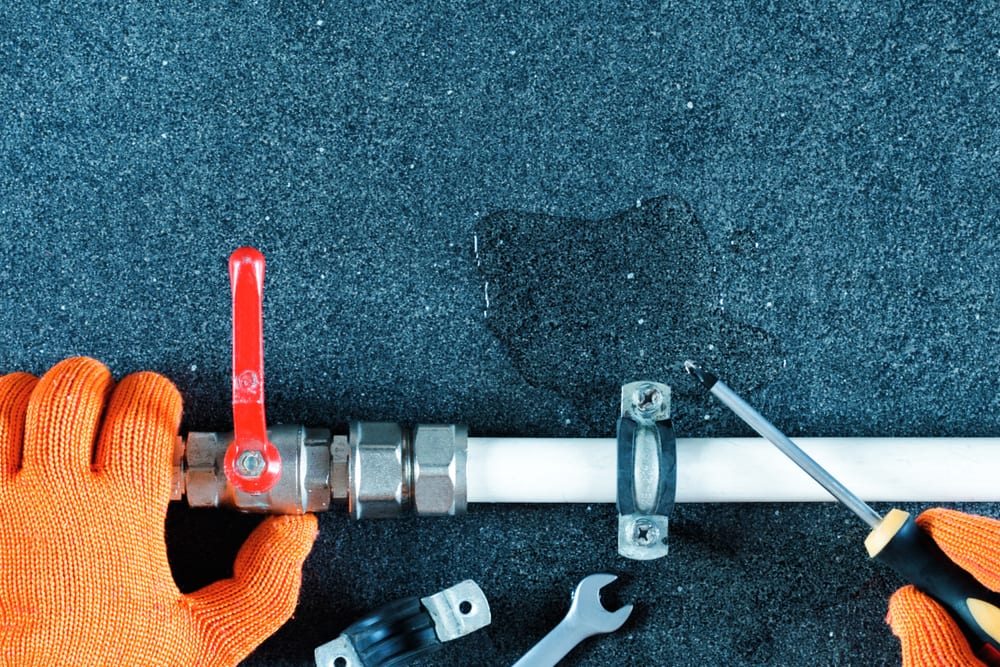We have discovered the article involving Locating water leaks down the page on the web and decided it made perfect sense to write about it with you on this site.

Early detection of leaking water lines can minimize a possible catastrophe. Aside from saving you cash, it will reduce the aggravation and also irritation. The minute you discover a leak, calling your plumber for fixings is the best option. Some small water leaks might not be visible. If you can not identify it with your naked eyes, right here are some hacks that help.
1. Examine the Water Meter
Every home has a water meter. Checking it is a proven way that assists you uncover leaks. For beginners, turn off all the water sources. Make certain nobody will certainly flush, make use of the tap, shower, run the washing maker or dishwasher. From there, go to the meter as well as watch if it will alter. Considering that no person is using it, there need to be no movements. That shows a fast-moving leakage if it moves. Similarly, if you detect no changes, wait an hour or more and also check back once again. This implies you may have a sluggish leakage that could even be below ground.
2. Examine Water Intake
Evaluate your water bills and track your water usage. As the one paying it, you must see if there are any discrepancies. If you identify sudden changes, regardless of your intake coinciding, it suggests that you have leakages in your plumbing system. Bear in mind, your water costs should This Site drop under the same range monthly. An unexpected spike in your expense shows a fast-moving leakage.
Meanwhile, a constant increase every month, despite having the very same habits, reveals you have a slow-moving leakage that's additionally gradually rising. Call a plumber to completely inspect your residential or commercial property, especially if you feel a cozy location on your flooring with piping beneath.
3. Do a Food Coloring Test
When it concerns water usage, 30% comes from toilets. Test to see if they are running correctly. Drop flecks of food shade in the storage tank as well as wait 10 minutes. There's a leakage in between the tank and also dish if the color somehow infiltrates your bowl during that time without flushing.
4. Asses Outside Lines
Don't fail to remember to inspect your exterior water lines too. Must water seep out of the connection, you have a loosened rubber gasket. One tiny leakage can squander tons of water as well as spike your water bill.
5. Evaluate as well as Assess the Circumstance
Property owners need to make it a practice to inspect under the sink counters and also even inside cupboards for any bad odor or mold development. These two warnings show a leak so punctual attention is required. Doing regular examinations, even bi-annually, can conserve you from a major issue.
Check for discolorations and compromising as most home appliances and also pipelines have a life expectations. If you presume dripping water lines in your plumbing system, do not wait for it to rise.
Early discovery of leaking water lines can reduce a prospective catastrophe. Some small water leakages might not be noticeable. Examining it is a proven means that aids you uncover leaks. One small leak can squander lots of water as well as surge your water expense.
If you think leaking water lines in your plumbing system, don't wait for it to escalate.
How to Know If Your Home Has a Hidden Leak
Water Meter Reveals Inexplicable Water Usage
If you’d like to test whether or not there’s a leak somewhere in your home, you can do this using your water meter. Here is how to conduct the test:
Don’t use any water in your home for at least 30 minutes; this also means not turning on faucets or water-using appliances.
Go outside, and check your water meter for activity.
If your water meter shows that there was activity, even though no one was using any water, this proves that there is a leak in your home.Visible Mold or Mildew Growth
Leaks behind walls create moist, dark environments that allow mold and mildew to grow and thrive. Eventually, you might see mold growth forming on the wall closest to a hidden leak.
If mold is growing in an area that receives a high amount of moisture, such as a bathroom, it may simply be an indication that better ventilation is needed. However, if you see mold growth on a wall or the ceiling in an area where you would not expect, you probably have a hidden leak.
Musty, Mildew Odor
Sometimes you might not be able to see the mold or mildew that is growing as a result of a leak. However, the smell can give the problem away just as easily. If you catch a whiff of something musty, there’s a good chance that old water is collecting somewhere in your home that you can’t see.
Stained/Warped Walls, Ceilings, or Floors
When your home soaks up water, a variety of red flags can become visible, including ceiling stains, bubbling drywall, warped walls, and sagging floors. While these issues can be caused by excess humidity, they can also be signs that a pipe or plumbing connection has started leaking behind your walls.
Inexplicably High Water Bill
After a while, you get a general sense for what your water bill should be. If you own a pool or sprinkler system, your bill will tend to be higher during summer. However, if you receive a water bill that seems especially high, and you can’t figure out what caused it, then you may have a hidden leak somewhere that’s increasing your bill.
https://www.plumbingjoint.com/blog/2019/july/how-to-know-if-your-home-has-a-hidden-leak/

We were made aware of that article on Hacks to detect leaks from a friend on another website. Sharing is nice. Who knows, you may be helping someone out. I praise you for your time. Come back soon.